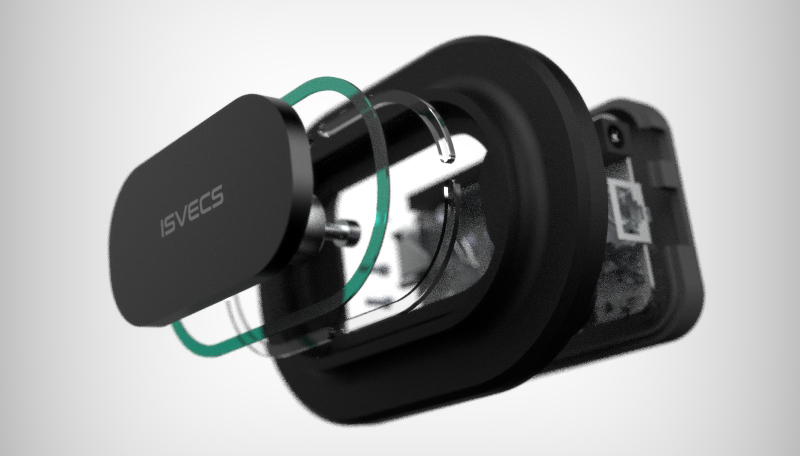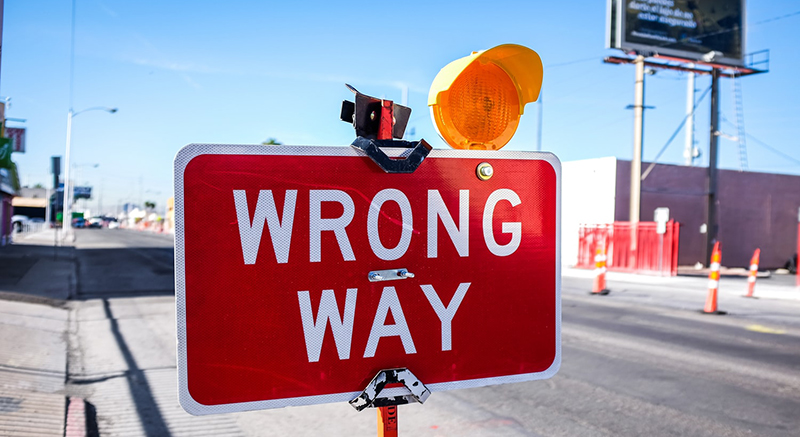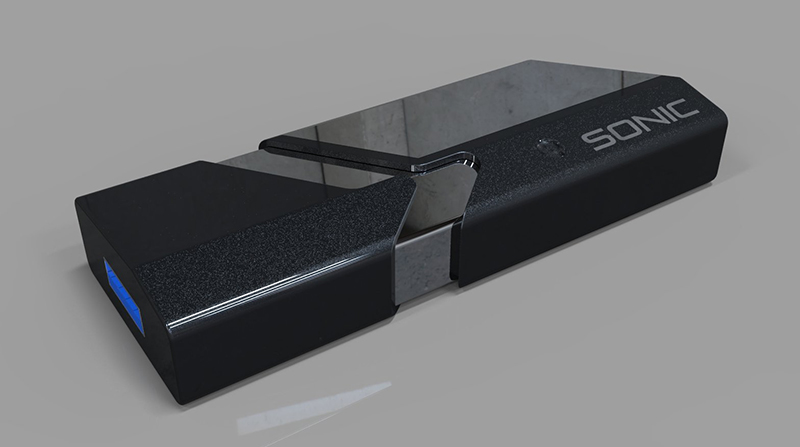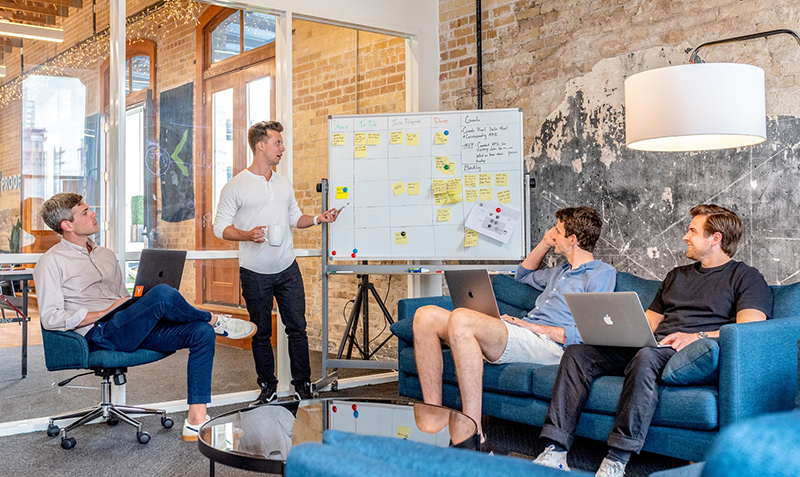Taking a product from idea to completion takes vast amounts of time, money, and other resources. A new product on the cutting edge of technology may take years along with millions of dollars to finally reach completion if it ever does.
Unfortunately, before a product can begin turning a profit for the company, it needs to be completed. Whether it’s an apartment building that can’t be rented out until it’s built, or a new cooking gadget, most sales are generated after the product is finished and ready for the customer to own.
Because of this, it’s tempting to get a product design service to rush through the design process in order to get a product that much faster, but skipping over a thorough design phase could end up costing your company a fortune.
The true cost of bad product design is seldom brought up during board meetings, but it’s something every company should look at to make healthy decisions for the company.
Here are just a few of the ways poor design can cost the company.
The Cost of Delays

Delays are an inevitable part of doing business. Even if you plan carefully and thoroughly if you stay in business any length of time, eventually a factory will burn down or some other disaster occurs that stalls the release of your newest product.
Delays cost your company. Every day your product is not on store shelves or available in some way for purchase is another day your business is not profiting. If you delay too long in getting new technology out, you pave the way for another company to get the jump on you and put it out first, taking away the market for that product.
If a delay does result in another product coming out before yours, imagine the damage in terms of lost revenue you might receive if your potential customers all have something similar by the time yours becomes available. One company estimated a 10-million loss in missed revenue, as well as the price of their product being doubled, due to a six-month delay.
Other ways delays can damage your business includes damages done to customer and investor relationships as well as potential bad press if the product is of particular interest to the world.
You can expect project costs to rise no matter what if delays are incurred. That doesn’t mean cutting corners to get done faster is a good choice—it means getting it right the first time, every time.
You can help your freelance industrial designer avoid poor product design in several ways. Don’t ask them to rush through the design. After all, a rushed design will no doubt have fewer chances for testing or prototypes.
The Cost of a Bad Design

Bad design can result in the loss of a loyal customer base, bad reviews, and serious damages to profit margins. At worst, a poorly designed product can bring an otherwise good company to its knees.
Have you ever investigated a new app for your phone, only to give up using it because it’s just too hard to navigate? Perhaps you’re even more disappointed than you otherwise would be because it promises to solve a problem you need help with, but the UX is so bad you can’t make use of it.
The same can be said for badly designed websites. Cheesy or poorly designed websites often make us think that the products will be just as useless, and can lead to a loss in revenue. Even the finest products can suffer from a poorly made website.
These are some of the most common examples of how poor design can affect your users, but physical products can also end up costing your company big.
One of the most infamous poorly designed product examples is Haribo’s sugar-free gummy bears. One need not go any farther than Amazon’s page for the five-pound bag of sugar-free gummy bears to enjoy hours and hours of laughs.
The gummy bear reviews all have a common feature, intense stomach cramps, explosive diarrhea, and an ominous burbling from their stomachs shortly after consuming anywhere from one to a full bag of these gummies.
While most of these over the top reviews are probably just humor articles directed at Haribo’s expense, they are backed up by real evidence. These sugar-free bears are made using a component called Maritol. It’s a sugar alcohol, which is a sensible solution for a sugar replacement.
The problem? It’s also prescribed by doctors to make you poop.
Anthony Di Pasquale, a nutrition instructor at George Brown College, said, “It’s an osmotic laxative, which means it draws water into the gut and makes the stool softer.”
In small doses, it’s not a problem, but in about 15 gummy bears, it’s enough to cause severe intestinal distress. Haribo was forced to place warnings on the product, and a Forbes article suggests that the frightening reviews (to date over 1,000) have sent many customers packing out of fear of the results.
While Haribo didn’t suffer too badly due to the fun-loving nature of the customers who wanted to experience a “gummy bear cleanse” for themselves, it could have been much worse for them. A little research into the other effects of the sugar they used might have saved them so many embarrassing Amazon reviews.
Haribo isn’t the only unfortunate company forced to make hasty edits to their product. Social media is filled with websites offering you a look at ‘design fails’ that are hilarious for readers, but embarrassing for customers.
Many of these design mistakes seem like they ought to be pretty obvious to the company who made it, but for some reason, they made it all the way through the manufacturing process before becoming the laughing stock of the world.
A Swiss company, Schweppes, is another good example of a brand that could have benefited from a little research before putting out a product. In their case, they were attempting to sell a well-tested product in Italy, and branded their tonic water as “il water” for the promotion.
Unfortunately, a quick translation of “il water” would have helped them to discover they were selling their product as “toilet water” to Italians. As you can imagine, the prospect of drinking canned toilet water was not impressive to Italians. The campaign understandably failed, and Schweppes had to scrap their campaign and try again. Fortunately, future efforts had more success.
The Cost Paid by the Community

The company isn’t the only one to pay for poor designs. Poorly designed products have a rippling effect that spreads through the community, and with certain types of products, the results can change lives. The effect on a community doesn’t often have a direct effect on a company’s bottom line, but it has a measurable cost that needs to be taken into account.
As an example, in 2013, a study found that the design of a schoolroom can affect the outcome of students by as much as 25%. This can be for better or worse depending on what the setup of the classroom is. Changing how cities are built as a whole can also decide whether people will be more likely to use a car, take the bus, or walk.
Smarter cities cannot just decide whether we will take the stairs or ride the elevator, it can also decide whether there will be crime, and if so, how much. Professor Tomkin and his team at the Designing Out Crime Research Centre at UTS focus on doing just that.
How we shape our products can make a big difference, whether it is citywide or a simple piece of paper. In fact, design may even have been responsible for the fate of our elections.
Alice Rawsthorne, a design critic, brought this up in an interview with The Atlantic. “One of the most notorious examples (of poor design) is the design of the ballot cards for the 2,000 U.S. presidential election in Palm Beach County, Florida,” Rawsthorn explained. “The design was changed in the interests of clarity and legibility, but proved so confusing to voters that it may well have changed the outcome not only of the vote there but the entire election.”
While your product may not be as critical to the world as an election ballot, even small products can affect the community. Imagine how popular a community garden will be if the tools are easy to use or novel to look at, compared to a garden with wobbly handled tools that are uncomfortable to use.
These costs may not necessarily mean a financial cost to your business, but they nonetheless have a considerable impact that needs to be considered when working on a design.
It’s tough to calculate how much the actual cost of poor design can be at its worst. It may be only that your product is ignored or even laughed at by customers, all the way up to causing real harm.
Unfortunately, it’s very common for businesses using new product design services to ask their designers to hurry through the design process. Looking at the design as if it is the least important phase of development is a serious mistake.
Design should be, if anything, the most thorough part of the process. A good design can bring positive reviews from grateful customers who finally have a solution to an annoying household issue.
With a clear design to follow, manufacturing design services will come easier. A well-tested device will also have fewer issues, and consequently, there will be fewer delays during the manufacturing process when many errors have already been caught during the testing and prototyping phase.
The Emotional Cost

When customers choose between two brands, it isn’t always a sensible choice about quality vs. cost. Brand loyalty is something companies spend a lot of time on because it explains why people will pay $5 for a cup of coffee at a Starbucks when they could get it for a dollar at the local diner.
Sometimes it isn’t about whether or not the product works better, looks nicer, or costs less. Just as often, it’s about how the product makes a customer feel. If a thoughtlessly designed product makes a customer feel stupid, it broke right away, or makes them feel a negative emotion in some way, they’ll be much less likely to purchase it.
One good example is the Morphsuits company. This company creates incredible skin-tight costumes, such as the muscle system of the body. The costumes are of fairly good quality, but the company decided to help expand their reach by putting their logo on the costume—ruining it with their name slapped across the backside of every costume.
This not only has led to dozens of angry reviewers, but also lots of recommendations for a competitor company who does not use their customers as walking billboards.
Mistakes like this are especially painful because it doesn’t just turn the customer off of that one product, but of the company itself, possibly for life. Getting another chance will be expensive at best, and may not be possible at all. Over time, this can mean thousands or even millions of dollars of revenue lost.
Most recently, ‘cancel culture’ has become a real threat to big business. Angry customers have taken to social media to unite over some of the poor choices made by companies around the world.
Customers have ‘canceled’ companies by refusing to purchase products, participate in events, or recognize the company for offenses often stemming from thoughtless design.
In one major case, Nike was forced to pull a pair of sneakers featuring the Revolutionary version of the US flag, after angry customers canceled the company over being offensive. Starbucks and other major companies have also come under fire for similar thoughtless designs.
These movements are enormous and result in negative PR that often spreads far and wide. It’s not something you want to be known for when trying to get your design seen by the world.
Emotional cost lasts much longer than other embarrassing mistakes because customers remember how you made them feel long after they’ve forgotten a product that was annoying or difficult to use. The price of a single product being rejected is often much cheaper than a lifetime of a customer—and their families and friends—rejecting your company.
What You Can Do

The true cost of poor design is incalculably high. In today’s highly competitive market, a poor reputation can bring even the largest of corporations to its knees.
Even large companies are not immune to the effects of poor design. When the Pepsi company tried to join the eco-friendly bandwagon by creating a compostable bag for their Sunchips line, the fact that it crinkled very loudly became a source of mockery for the company. They were forced to pull the bag, after an 11% dip in sales for the product line. They have yet to introduce another eco-friendly bag to their lineup after this painful drop in sales.
For smaller companies, an 11% dip in sales might be critical. Not every company has the deep pockets of a huge corporation to cover the expenses when customers turn their backs. For small to medium customers, a severe drop in sales like this could mean the end of the company.
As a designer, making sure your customers don’t go out of business due to poor design is of vital importance. If you’re the customer, you naturally also want to avoid poor design. What can you do to keep this nightmare from being your own reality?
1. Set Reasonable Time Frames
Deadlines aren’t just there to be stressful. For a team to successfully get a product out the door, they need to know approximately when things need to be done. When estimating how long it will take to finish a product design, make sure you have enough time to do it properly. This includes time added in for things to potentially go wrong.
If the customer asks for a time frame, give them the true time you need to get it done right, not the fastest possible time you can get it done right if everything goes well.
2. Understand Expectations
What is your customer expecting you to get done during the deadline time? Do they want just design, or do they also want prototype design engineering and testing done during this time? Knowing what precisely they are expecting can make a big difference in how much time you have. The last thing you want is to give them a time frame for the design, submit it, and find out they wanted the product design ready for manufacture in that time frame.
If you’re the customer, you can help by being clear about your expectations in the initial meeting. Clear communication is the key to a smooth process, regardless of who you are.
3. Manage Things Carefully
While delays do happen from unavoidable sources, many of the delays that do come up are due to poor management. A thoughtful team manager will have a detailed plan of action and will have back up plans in case of small delays.
As a customer, you can avoid costly delays by hiring a design team who can manage things efficiently. If you’ve never worked with a team before, ask for references and follow up on those references. When you call, ask them whether the design team got their designs out on time, if there were delays, and how the team handled them.
It’s always easier to solve a problem by avoiding it, and avoiding a team that always seems to be late is a sound method for ensuring your own project isn’t terribly delayed.
Damage Control: Getting a Delayed Project Back on Track

Even the best projects can be derailed by unforeseen circumstances. It’s impossible to predict whether a disaster will wipe out your servers, a material is suddenly no longer available, or unexpected problems come up during a phase of the design process.
A certain number of problems is to be expected during any project. If you have run into a problem and know that the project will be delayed, alert your customer right away. The sooner you know a project will be delayed unavoidably, the sooner other parts of the process can be adjusted for this new expectation.
The next step will be to look and see if other parts of the project can be sped up to help make up for the delay in this phase of the project. Did the prototype come out ahead of schedule? That might make up for the delay in the design phase. Did the prototype show you need to redesign the product? You may be able to help smooth that over by using CAD design services to help safely speed up the testing process.
If you’ve planned in a certain amount of time for delays, using it to help control the damage can make all the difference between how long the project is delayed for, or even if it needs to be held up at all.
The Bottom Line
Delays are costly events for businesses, whether you own a start-up or a big corporation. How you handle them, however, is a different story. You can work to prevent them in advance by hiring a design company who has a track record for being on time if you are the customer. If you are a designer, you can utilize proper quality management techniques to help keep projects on track.
Regardless of what position you hold in a project, making sure that a project stays on track and is delayed as little as possible is one of the most important things you can do for a project.
Cad Crowd Can Help You Avoid Poor Product Design Problems
Avoiding poor product design issues is easier if you work with skilled and experienced professionals. They will be more likely to predict problems and prepare for potential setbacks that even you may not be able to foresee.
This is exactly the type of product design freelancers that you can find at Cad Crowd. You can choose from nearly 25,000 pre-vetted and confidential freelance designers from all across the globe who specialize in a wide variety of skills, niches, and product design stages from new invention ideation and photorealistic 3D modeling design to prototyping and packaging design services.
What’s even better is that you can work with them from the comfort of your home and at a cost that’s on average up to 30% lower than if working with an in-house design team.
Take a look at how it works as well as at how you can launch a design contest to get multiple product design concept ideas.
